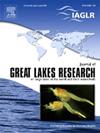Comparing three common nest survey methods, using double-crested cormorants as a proposed sentinel for monitoring plastic pollution in freshwater environments
IF 2.4
3区 环境科学与生态学
Q3 ENVIRONMENTAL SCIENCES
引用次数: 0
Abstract
Many bird species use plastic as nest-building material, and nest surveys represent a unique opportunity to monitor environmental plastic pollution. However, the current literature lacks consistent, repeatable methodologies, making comparison across studies challenging. This study evaluated three common nest survey methods to assess the use of nest debris: photographic assessment, visual assessment, and nest deconstruction. We applied these methods to double-crested cormorant nests (Nannopterum auritum) at two locations on Lake Ontario, Canada. We found that for this species, nest deconstruction yielded the greatest accuracy and detail for detecting debris abundance, type, and colour. Of the two non-invasive methods, visual surveys outperformed photographic surveys across all metrics assessed. In our mainland colony, 100% of nests contained debris based on visual assessment, while at our offshore colony only 37.4% of nests contained debris, suggesting that location influences nest debris for this species. We detected Personal Protective Equipment (PPE)-related debris in 20% of all nests across survey years at our mainland colony (2022 and 2023), representing the first time that PPE has been documented in the nests of this species and demonstrating that nest surveys can be a useful tool for capturing changes in an evolving pollution landscape. This study contributes evidence that double-crested cormorants may be a useful sentinel species for monitoring plastic pollution in understudied, freshwater environments. Our results also demonstrate that the chosen method can greatly impact the results of a nest survey, and careful consideration of methodology should be undertaken before implementing a nest survey to monitor plastic pollution.

比较三种常见的鸟巢调查方法,以双冠鸬鹚作为监测淡水环境塑料污染的哨兵
许多鸟类使用塑料作为筑巢材料,而鸟巢调查是监测环境塑料污染的独特机会。然而,目前的文献缺乏一致的、可重复的方法,使得跨研究的比较具有挑战性。本研究评估了三种常用的巢调查方法来评估巢碎片的使用:摄影评估、视觉评估和巢解构。我们将这些方法应用于加拿大安大略湖两个地点的双冠鸬鹚巢穴(Nannopterum auritum)。我们发现,对于这个物种,巢穴解构在检测碎片丰度、类型和颜色方面产生了最高的准确性和细节。在两种非侵入性方法中,视觉调查在所有评估指标上都优于摄影调查。在我们的大陆种群中,100%的巢含有碎片,而在我们的近海种群中,只有37.4%的巢含有碎片,这表明位置影响了该物种的巢碎片。我们在大陆蚁群(2022年和2023年)的调查年份中,在20%的巢中发现了与个人防护装备(PPE)相关的碎片,这是首次在该物种的巢中记录到个人防护装备,并证明巢调查可以成为捕捉不断变化的污染景观变化的有用工具。这项研究提供的证据表明,在研究不足的淡水环境中,双冠鸬鹚可能是监测塑料污染的有用哨兵物种。我们的研究结果还表明,所选择的方法会极大地影响巢调查的结果,在实施监测塑料污染的巢调查之前,应仔细考虑方法。
本文章由计算机程序翻译,如有差异,请以英文原文为准。
求助全文
约1分钟内获得全文
求助全文
来源期刊

Journal of Great Lakes Research
生物-海洋与淡水生物学
CiteScore
5.10
自引率
13.60%
发文量
178
审稿时长
6 months
期刊介绍:
Published six times per year, the Journal of Great Lakes Research is multidisciplinary in its coverage, publishing manuscripts on a wide range of theoretical and applied topics in the natural science fields of biology, chemistry, physics, geology, as well as social sciences of the large lakes of the world and their watersheds. Large lakes generally are considered as those lakes which have a mean surface area of >500 km2 (see Herdendorf, C.E. 1982. Large lakes of the world. J. Great Lakes Res. 8:379-412, for examples), although smaller lakes may be considered, especially if they are very deep. We also welcome contributions on saline lakes and research on estuarine waters where the results have application to large lakes.
 求助内容:
求助内容: 应助结果提醒方式:
应助结果提醒方式:


